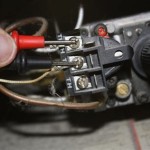How To Install A Mantel On Uneven Stone Fireplace
Installing a mantel above a stone fireplace can dramatically enhance the aesthetic appeal of a living space. However, the inherent unevenness of natural stone presents unique challenges compared to installing a mantel on a flat, drywall surface. Successfully mounting a mantel on such a surface requires careful planning, precise measurements, and appropriate techniques to ensure a secure and visually appealing result. This article provides a comprehensive guide to navigating the complexities of installing a mantel on an uneven stone fireplace.
Understanding the Challenges of Uneven Stone Surfaces
The primary hurdle in mounting a mantel on a stone fireplace is the irregular surface. Natural stone comes in varying sizes, shapes, and thicknesses, resulting in an uneven plane. This unevenness can prevent the mantel from sitting flush against the wall, creating gaps and instability. Furthermore, drilling into stone requires specialized tools and techniques to avoid cracking or damaging the material. The weight of the mantel must also be considered, as uneven support could lead to the mantel sagging or detaching over time. Therefore, selecting the appropriate mounting method and hardware is crucial for safety and longevity.
Another significant challenge is the potential for variations in the stone's structural integrity. Some stones may be more porous or have hidden fractures, making them less suitable for anchoring heavy objects. A thorough inspection of the stone's surface is necessary to identify weak points and plan accordingly. This inspection should involve visually assessing the stone for cracks, chips, and loose pieces. In some cases, tapping lightly on the stone can reveal hollow areas or internal damage.
Finally, the aesthetic integration of the mantel with the existing stone is essential. The style, color, and texture of the mantel should complement the stone to create a cohesive and visually appealing focal point. Consider the overall design of the room and choose a mantel that enhances the existing architectural features. The size and proportions of the mantel should also be carefully considered to ensure it is neither too large nor too small for the fireplace.
Preparing for the Installation
Before beginning the installation process, gather the necessary tools and materials. These typically include: a level (preferably a long level for accuracy), a measuring tape, a pencil, a stud finder (to locate studs in the wall behind the stone), a hammer drill with masonry bits of varying sizes, appropriate anchors (such as wedge anchors or sleeve anchors), shims (wood or plastic), construction adhesive (specifically formulated for stone), safety glasses, and work gloves. The type of anchors needed will depend on the weight of the mantel and the composition of the stone.
Next, carefully measure the desired location for the mantel. Consider the height above the firebox (ensuring it complies with local building codes and safety regulations) and the overall visual balance of the fireplace. Mark the intended position on the stone using a pencil and the level. Accurate measurements are essential to ensure the mantel is installed straight and at the correct height. Double-check all measurements before proceeding to the next step.
After marking the location, thoroughly clean the stone surface where the mantel will be installed. Remove any dust, dirt, or debris that could interfere with the adhesion of the construction adhesive or the stability of the mantel. A wire brush or a stiff-bristled brush can be used to remove loose particles. Wipe the surface with a damp cloth and allow it to dry completely before proceeding. A clean surface will ensure a stronger bond between the mantel and the stone.
Installing the Mantel with Shims and Anchors
The most crucial step in installing a mantel on an uneven stone fireplace is compensating for the irregularities in the surface. This is typically achieved using shims. Begin by dry-fitting the mantel against the stone to identify any gaps or uneven areas. Insert shims between the mantel and the stone to create a level and stable base. Use a level to ensure the mantel is perfectly horizontal. Adjust the shims as needed until the mantel sits flush and securely against the stone.
Once the mantel is leveled and shimmed, mark the locations for the anchor bolts. These locations should correspond to solid areas of stone and, ideally, should align with wall studs behind the stone for added support. Use the stud finder to locate the studs and mark their positions. Ensure the anchor locations are evenly spaced and will provide sufficient support for the weight of the mantel. Consider using a minimum of four anchor bolts for a standard-sized mantel.
Using a hammer drill and a masonry bit of the appropriate size, drill pilot holes through the mantel and into the stone at the marked locations. The depth of the pilot holes should be slightly deeper than the length of the anchor bolts. Follow the manufacturer's instructions for the anchor bolts you are using. Carefully insert the anchor bolts through the mantel and into the pilot holes. Tighten the bolts gradually, ensuring the mantel remains level and the shims stay in place. Avoid overtightening the bolts, as this could crack the stone.
After the anchor bolts are securely tightened, apply construction adhesive to the back of the mantel where it contacts the stone. This will provide additional bonding strength and help to fill any remaining gaps. Use a generous amount of adhesive, but avoid applying so much that it oozes out from the edges of the mantel. Press the mantel firmly against the stone and allow the adhesive to cure according to the manufacturer's instructions. This typically takes 24 to 48 hours.
Once the adhesive has cured, you can remove any excess shims that are visible. Use a utility knife or a small saw to carefully trim the shims flush with the surface of the mantel. If desired, you can fill the gaps between the mantel and the stone with a color-matched caulk or grout to create a seamless appearance. Smooth the caulk or grout with a wet finger or a damp sponge to create a clean and professional finish.
Alternative Mounting Methods
While the method described above is a common and effective way to install a mantel on an uneven stone fireplace, alternative mounting methods may be more suitable depending on the specific circumstances. One alternative is to use a floating mantel bracket system. These brackets are designed to be concealed within the mantel, creating a clean and minimalist look. Floating mantel brackets typically require precise installation and a strong supporting wall structure.
Another alternative is to build a support structure behind the mantel. This can be achieved by constructing a wooden frame that is securely attached to the wall studs. The mantel is then attached to the wooden frame, which provides a level and stable mounting surface. This method is particularly useful for heavy mantels or when the stone surface is extremely uneven.
In some cases, it may be necessary to modify the stone surface to create a more level mounting area. This can be done by carefully grinding down high spots or filling in low spots with mortar or epoxy. However, this should only be attempted by experienced professionals, as it can be difficult to achieve a seamless and aesthetically pleasing result. Modifying the stone surface can also alter the appearance of the fireplace and may not be desirable in all situations.

Installing A Wood Mantel On Stone Wall Remodelaholic

Installing A Wood Mantel On Stone Wall Remodelaholic

Guide Mantel Installation On A Stone Fireplace

How To Build And Hang A Mantel On Stone Fireplace Shanty 2 Chic

Installing And Making A Floating Mantle For Our Stone Fireplace

Installing And Making A Floating Mantle For Our Stone Fireplace

Installing And Making A Floating Mantle For Our Stone Fireplace

Installing And Making A Floating Mantle For Our Stone Fireplace

How To Build And Hang A Mantel On Stone Fireplace Shanty 2 Chic

A Wood Mantle For An Existing Stone Fireplace
Related Posts








